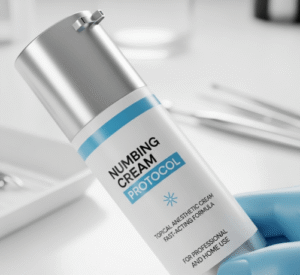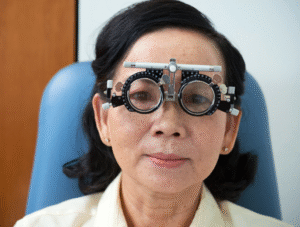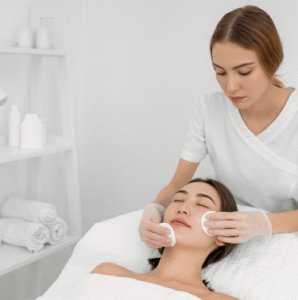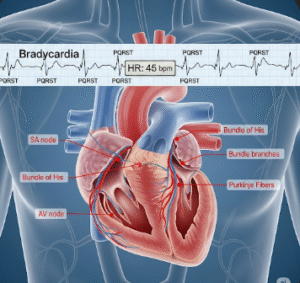Overview
Gout tophi are firm, chalky lumps that develop under the skin as a result of chronic gout, a condition caused by the accumulation of uric acid crystals in the body. These lumps are made up of monosodium urate crystals and are usually found in areas like the fingers, toes, elbows, ears, and around joints. Unlike sudden gout attacks that cause painful joint inflammation, tophi usually form over time after years of poorly controlled or untreated gout.
Tophi can cause pain, stiffness, and deformity, interfering with joint function and leading to disability if not treated. While they are not life-threatening, they often signal advanced or long-standing gout and require medical management. South Korea, with its advanced rheumatology and orthopedic care, offers highly effective treatments for gout tophi, including medications and surgical removal in severe cases.
Key Facts
➲ Gout tophi are hard lumps of uric acid crystals that develop under the skin.
➲ They appear after years of uncontrolled gout.
➲ Common sites include fingers, toes, elbows, knees, and ears.
➲ Tophi may cause joint pain, stiffness, or deformity.
➲ Proper uric acid control can prevent or shrink tophi.
➲ In Korea, advanced rheumatology treatments and minimally invasive surgeries are widely available.
What is Gout Tophi?
Gout tophi represent the chronic phase of gout. When uric acid levels remain high for an extended period, crystals deposit in joints, soft tissues, and cartilage. Over time, these deposits cluster into nodules known as tophi.
Unlike acute gout flares, which cause sudden and severe joint pain, tophi develop gradually and may not always be painful. However, they can lead to significant complications such as deformities, reduced joint mobility, nerve compression, and skin ulceration when left untreated.
What Symptoms Are Related to Gout Tophi?
The appearance of gout tophi is often accompanied by additional symptoms of chronic gout.
➲ Visible, chalky-white or yellowish nodules under the skin.
➲ Firm lumps on fingers, toes, elbows, knees, or ears.
➲ Joint pain and stiffness, especially during movement.
➲ Recurrent gout flares affecting the same joints.
➲ Redness, swelling, or warmth around affected joints.
➲ Skin ulceration or infection if tophi break through the skin.
➲ In severe cases, deformity and reduced joint function.
What Causes / Possible Causes
The primary cause of gout tophi is long-term hyperuricemia (excess uric acid in the blood).
1. Chronic Gout
➲ Repeated gout flares over many years cause crystal deposits.
➲ Without treatment, uric acid builds up and forms tophi.
2. High Uric Acid Levels
➲ Excess uric acid comes from purine-rich foods (red meat, seafood, alcohol).
➲ Impaired kidney function reduces the body’s ability to excrete uric acid.
3. Poorly Managed Gout
➲ Inconsistent or lack of treatment leads to crystal accumulation.
➲ Tophi generally form 10–20 years after initial gout diagnosis.
4. Other Risk Factors
➲ Family history of gout.
➲ Chronic kidney disease.
➲ Obesity, diabetes, hypertension, and metabolic syndrome.
When Should I See My Doctor?
You should consult a doctor if:
➲ You develop visible lumps on fingers, toes, or joints.
➲ Gout attacks become frequent or more severe.
➲ Joint pain and stiffness interfere with daily activities.
➲ Skin over tophi becomes red, swollen, or infected.
➲ You notice deformities or difficulty using your hands/feet.
Emergency care is needed if you develop a fever with joint swelling, open wounds over tophi, or sudden severe pain, as these may indicate infection or complications.
Care and Treatment
Treatment for gout tophi involves both medical management and, in some cases, surgical intervention. The goal is to lower uric acid levels and prevent further crystal deposition.
Lifestyle and Home Management
➲ Follow a low-purine diet (avoid red meat, shellfish, and alcohol).
➲ Drink plenty of water to help flush uric acid.
➲ Maintain a healthy weight to reduce joint stress.
➲ Regular exercise to support joint mobility.
Medications
➲ Urate-lowering drugs such as allopurinol or febuxostat.
➲ Colchicine or NSAIDs for acute flare-ups.
➲ Probenecid to increase uric acid excretion.
➲ In severe or resistant cases, pegloticase (enzyme therapy) may dissolve uric acid crystals.
Surgical Options
➲ Surgical excision of large, painful, or infected tophi.
➲ Joint reconstruction in advanced cases with severe deformity.
➲ Minimally invasive techniques to preserve mobility while removing deposits.
Treatment Options in Korea
South Korea has become a global hub for advanced rheumatology and orthopedic care, offering state-of-the-art diagnosis and management for gout tophi.
Diagnosis in Korea
➲ Blood tests to measure uric acid levels.
➲ Ultrasound and dual-energy CT scans to detect crystal deposits.
➲ Joint aspiration to confirm urate crystals under a microscope.
Medical Treatments in Korea
➲ Highly tailored uric acid-lowering therapy with genetic-based medication adjustments.
➲ Advanced biologic therapies like pegloticase for resistant cases.
➲ Holistic treatment plans including nutrition, weight management, and lifestyle coaching.
Surgical and Advanced Therapies
➲ Minimally invasive tophi removal surgery with reduced recovery times.
➲ Joint-preserving reconstructive procedures to maintain mobility.
➲ Integration of robotic surgery techniques for precision.
Rehabilitation and Support
➲ Specialized rehabilitation programs focusing on joint mobility.
➲ Nutritional counseling to manage diet-related uric acid control.
➲ Long-term monitoring through advanced digital health platforms in Korean hospitals.













